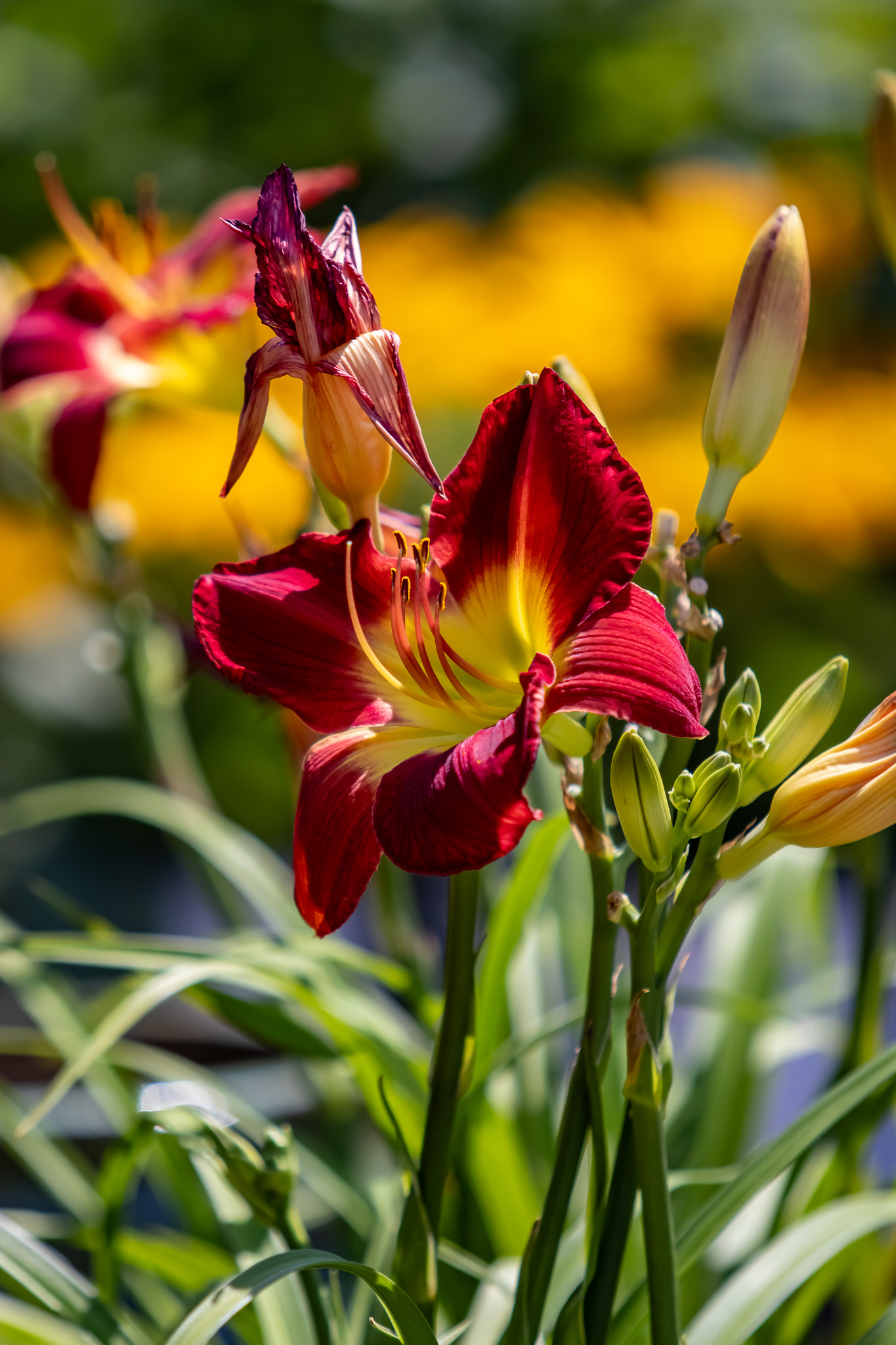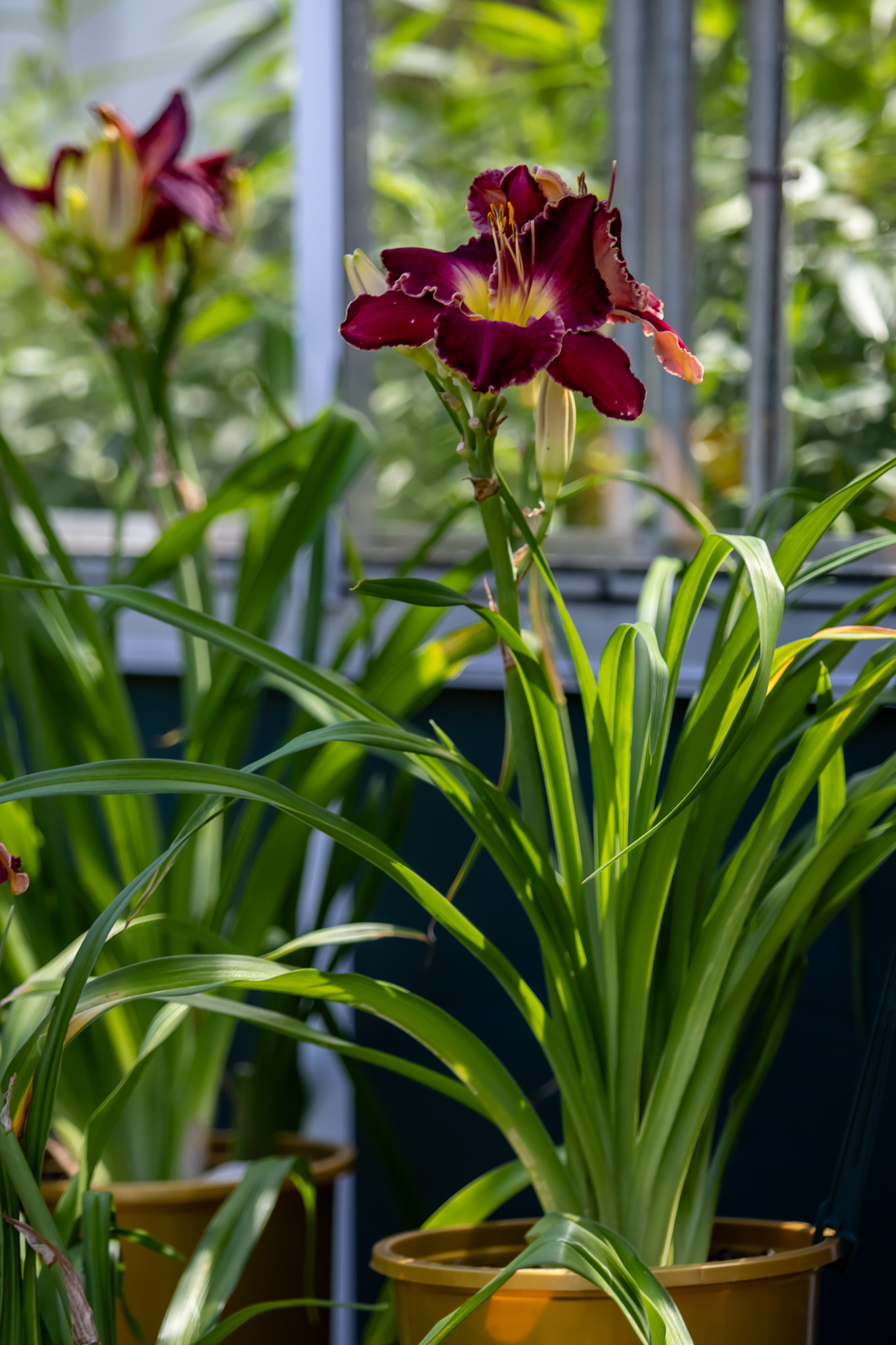It’s officially the season of daylilies! They are not only visually captivating perennials, but also incredibly easy to care for, making them a favorite among both novice and seasoned gardeners. This guide will walk you through everything you need to know about selecting, nurturing, and growing these delightful plants.



Choosing Your Daylilies
Varieties and Colors: Daylilies come in a rainbow of colors, from soft pastels to vivid reds and purples.
Some popular varieties that we have in stock now are:
- Bubblegum Pie
- Lavender Blue Baby
- Mean Mr. Mustard
- Nosferatu
- Red Hot Returns
- Royal Frosting
- Scarlet Orbit
Planting Daylilies
- Location: Daylilies love the sun! Plant them in a spot that gets at least 6 hours of direct sunlight each day. They can handle some shade, but more sun means more flowers.
- Soil Preparation: These plants aren’t picky about soil, but they do best in well-drained, rich soil. Mix in some compost or aged manure to make the soil more fertile and improve its texture.
Planting Depth and Spacing: Plant daylilies so the crown (where the roots meet the stem) is about an inch below the soil surface. Space them 18-24 inches apart so they have room to grow and spread out. This helps them stay healthy and bloom more.
Caring for Your Daylilies
- Watering: Daylilies can handle dry spells, but regular watering helps them grow better and bloom more. Water deeply to encourage strong roots, especially if it hasn’t rained for a while. Aim for about an inch of water per week.
- Mulching: Put a layer of mulch around your daylilies to keep the soil moist, prevent weeds, and keep the roots cool. Use organic mulch like wood chips or straw. Add more mulch as needed to keep it effective.
- Feeding: Feed your daylilies with a balanced, slow-release fertilizer in early spring when new growth starts. Avoid fertilizers with too much nitrogen, as they can cause more leaves than flowers. A mid-season boost with a high-phosphorus fertilizer can help with blooming.
Deadheading & Pruning: Remove spent flowers (deadheading) to encourage more blooms and keep the plant looking tidy. In late fall, cut back the foliage to a few inches above the ground to get them ready for winter and prevent diseases.
Enjoying Your Daylilies
- Seasonal Interest: Daylilies add beauty to your garden all season long. Their leaves provide texture and greenery, and the flowers bring stunning color. Choose early, mid, and late-season bloomers to enjoy flowers from spring to fall.
- Cut Flowers: Daylilies make great cut flowers. Each bloom lasts just a day, but the buds will keep opening for several days, bringing a touch of your garden indoors.
- Wildlife Friendly: Daylilies attract pollinators like bees and butterflies, making your garden more eco-friendly. They also provide shelter for beneficial insects and small wildlife.
Daylilies are a fantastic addition to any garden. With their stunning flowers and easy-care nature, they bring joy with minimal effort. By choosing the right varieties, providing proper care, and propagating them thoughtfully, you can enjoy a beautiful daylily display year after year. To stay inspired and grow with us, follow us on Facebook, Instagram, Pinterest, and TikTok to dig into the joys of gardenin
